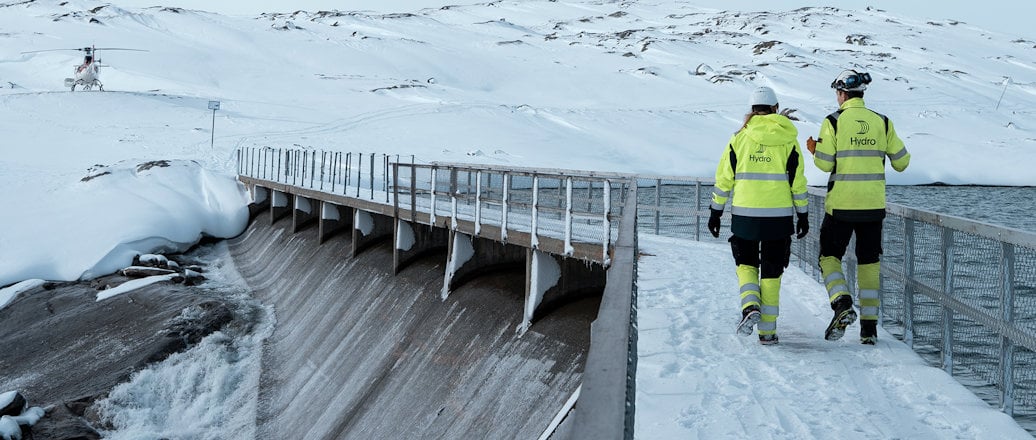Our Power Operations unit is responsible for our physical operations, including our hydropower portfolio in Norway, and the wind farm operations at Tonstad, Norway.
Hydro and Lyse, a publicly owned power company in Norway, have merged power production assets in the south-west region of Norway in a new company, Lyse Kraft DA, that includes Hydro’s hydropower assets Røldal-Suldal Kraft (RSK) and the majority of Lyse’s power production portfolio. Following the merger, Hydro is operator of 40 power plants in Norway, with a combined output of 13.7 TWh renewable electricity in a normal year. Adjusted for ownership shares, our corresponding captive production is 9.4 TWh.
The hydropower plants operated by Hydro are located in four main areas – Telemark, Sogn, Røldal-Suldal and Stavanger – and managed from a common operations center at Rjukan in Telemark. We also own the Vigeland power plant in Vennesla, and a 33 percent interest in Skafså Kraftverk ANS in Telemark.
Energy Markets
The Energy Markets unit is a significant market player in the Nordics and Brazil, optimizing our power portfolios in the markets every day according to the market outlook, weather forecasts and the hydrological situation within Hydro's water reservoirs. By utilizing the flexibility of the hydropower plant systems and the volatility in the spot market price, Hydro aims to realize a premium above the average spot price. Our total Norwegian power market portfolio is balanced in the market on the Nord Pool Spot power exchange.
In Brazil, we have established a fully owned subsidiary, Hydro Energia, which has become a significant market player in the Brazilian energy sector. Hydro Energia is able to supply a variety of services to both Hydro entities and external companies, including wholesale power agreements.
Our total market portfolio for power is currently around 18 TWh per year in Norway, including 15 long-term power contracts (18 TWh equals the annual consumption of 900,000 Norwegian households per year).
Buying and selling of power
Every day Hydro trades hydropower on the Nord Pool power exchange. On this exchange, power produced from different sources is bought and sold for delivery the next day.
How is power bought and sold?
Trading on the Nord Pool power exchange is based on the estimated consumption (demand) and the scheduled production (supply) from the power suppliers. Both parties submit their offers by noon and the day-ahead price is calculated from the offers made by the buyers and the sellers in the market.
What determines the price?
In the Nordic countries there is one price for the entire Nordic area as well as prices for several regional price areas. One reason why prices vary between the different areas is that the supply and demand for power is not equal everywhere and because there are limited transmission possibilities available in the grid between different areas. Wind and rain are typical factors that can affect the supply side of energy, while temperature is one that can affect the demand side.
Wind and weather have an impact
Since power production is so dependent on the weather, it can be difficult to predict changes in production. For example, more wind than expected will increase wind power production. Or the temperature can drop more than forecast, which increase power consumption. Purchases and sales as a result of deviation from planned production or demand usually occur continuously throughout the day.
Updated: 22 May 2024
